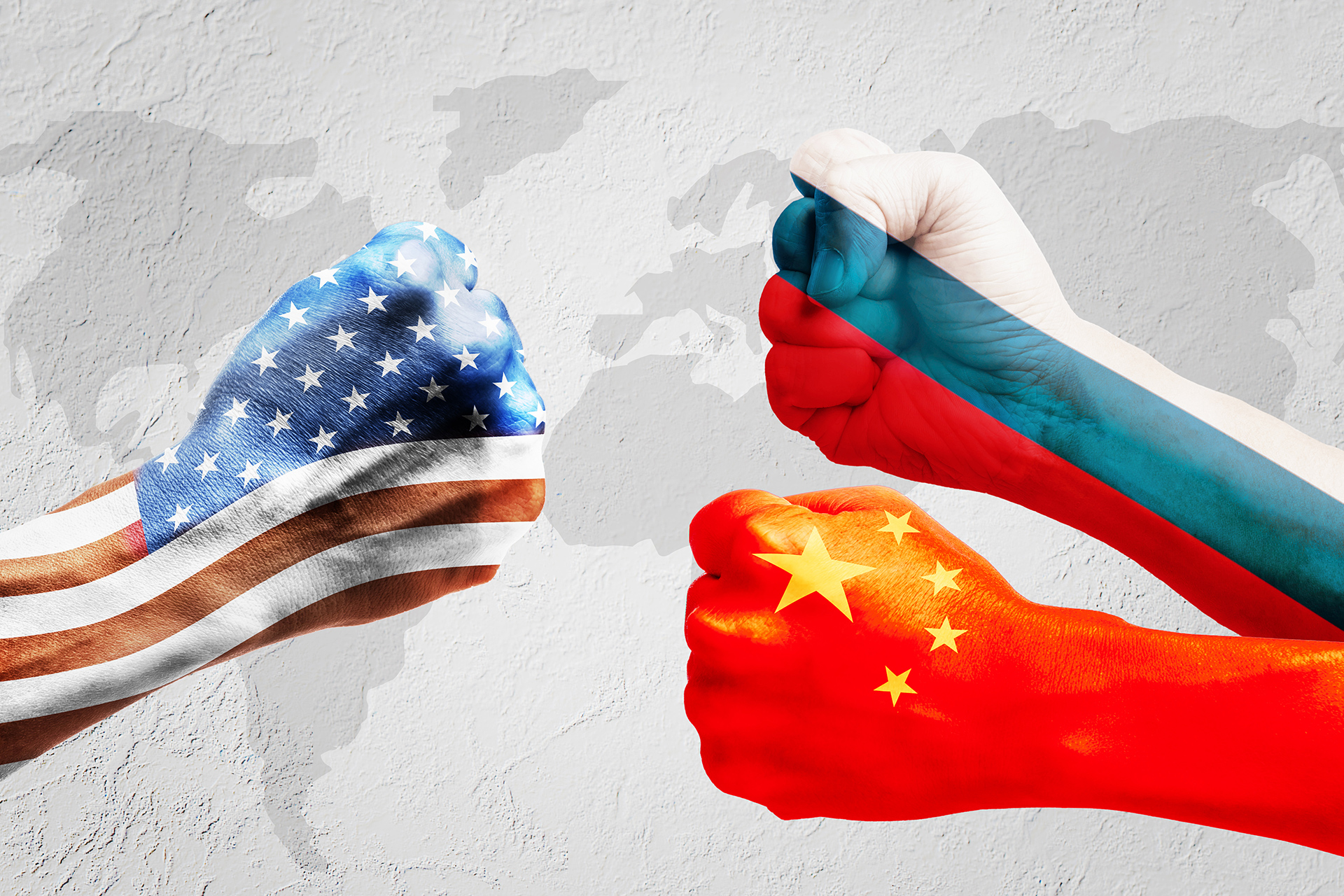Trade between Russia and China reached $218 billion in the 11 months of last year (Shutterstock)
MOSCOW – The gradual abandonment of the dollar has been a highlight of economic and trade cooperation between Russia and China over the past year, and the two countries have made concrete steps toward bringing the two countries closer to what can be called a "financial alliance."
According to Russian Prime Minister Mikhail Mishustin, Russia and China in 2023 shifted more than 90% of trade to yuan and rubles, which he said illustrates the almost complete abolition of the dollar in economic relations between the two countries.
Although the trend towards Russia reducing dependence on the "king of currencies" began after the 2008 crisis, when the unipolar financial system showed weaknesses and harmed trade, production and employment, with the intensification of Western sanctions against Moscow, the latter began the process of dedollarization in the context of linking the state between financial power and geopolitical power, and on the basis that attempts to develop, strengthen the army, develop technology, and maintain a productive workforce require a solid economic base.
The ruble recorded a record low in 2023, the highest in the past nine years, as the dollar rose by 30%, and experts saw it as one of the negative consequences of capital outflows from the country, the negative dynamics of oil exports at the beginning of the year, and import growth.
Dollar manicure
Faced with this reality, China and Russia have already been seriously discussing the integration of their financial systems, with Moscow assuring Beijing that it is ready to use the yuan in its foreign exchange reserves to speed up the process.
Russian official data reveal a qualitative shift in trade exchange between the two countries, accompanied by an exchange of national currencies. The volume of bilateral trade between the two countries has increased to $218 billion.
Based on the results of the first nine months of 2023, the total trade volume between Russia and China increased by 29.5% compared to the same period last year.
In September alone, trade between the two countries reached about $21.2 billion, and bilateral trade continued to rise to $21.5 billion in November.
Since the beginning of 2023, China has exported goods worth $ 81.4 billion to Russia, an increase of 56.9% over 2022, while Russia exported about $ 95 billion to China, an annual increase of 12.7%.
This comes in parallel with the plan to transfer Russian oil and gas payments, which will continue to work, according to Russian officials, as long as European countries believe they cannot reduce their dependence on Moscow without incurring unacceptable financial hardship.
This shows, according to Russian observers, that Moscow and Beijing are seeking to undermine the global dominance of the US dollar, with minimal trade exchange between them.
Economist Victor Lashon believes that this development heralds the beginning of the end of US financial hegemony, although the dollar was able to regain its foothold generally thanks to consumer spending and commercial investment, to face the economic repercussions caused by the Corona epidemic, as well as food shortages exacerbated by the war in Ukraine.
According to Al Jazeera Net, despite Russia's financial difficulties, it is clear that it is moving towards undermining the global dominance of the US dollar, by strengthening cooperation with the Chinese dragon.
According to him, China is an economic giant not only in terms of production and exports, but also in terms of the size of its financial sector, which is currently the largest in the world, with assets worth $ 60 trillion, equivalent to 340% of China's GDP.
Despite the clear strength of the dollar in the first half of 2022, and its use as a weapon to impose sanctions on Russia, this has given new impetus to some of the world's largest economies to explore ways to circumvent the US currency, led by Russia and China.
Dedollarization
While no one is saying that it will get rid of the dollar as the primary means of exchange anytime soon, dedollarization has become a strategic choice for Moscow and Beijing.
There are those who believe that the process of getting rid of dealing with the dollar will not be as easy as some analysts are talking about, as confirmed by the researcher at the Higher Institute of Economics Vladimir Olechenko, who tells Al Jazeera Net that the success of this process depends on the comprehensive development of the local market, as a condition for Russia to be able to abandon the use of the dollar; because it depends more on sales in the foreign market.
The same applies to the Chinese economy, but China, unlike Russia, is purposefully engaged in the development of the domestic market, at a time when the foreign market has become an additional income for China, but not the main one.
He explains that the steps taken by China and Russia to abandon the US dollar were accompanied by important points that should have been taken into account for each of the economies, such as: the dependence of the Russian economy to a large extent on the sale of natural resources, timber, wheat and other agricultural crops on the world market, in exchange for which it receives its cash equivalent in US currency.
The problem with most currencies, Olechenko points out, is that their exchange rate depends heavily on a narrow set of commodities, which for Russia are energy resources, minerals and raw materials.
Since the price environment of these commodities affects the balance of payments in the country, and thus the exchange rate of the ruble, this state of volatility does not allow the ruble to become a reserve currency, so no country wants its Russian currency reserves to become cheaper, due to the volatility of oil prices, the same speaker concludes.
Source : Al Jazeera

